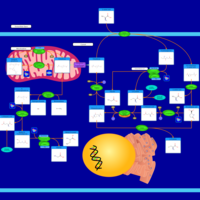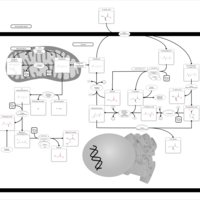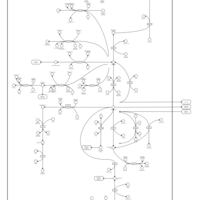| Glutathione metabolism |    |
| Glutamate Metabolism |    |
| Arachidonic Acid Metabolism |    |
| Piroxicam Action Pathway |    |
| Acetylsalicylic Acid Action Pathway |    |
| Etodolac Action Pathway |    |
| Ketoprofen Action Pathway |    |
| Ibuprofen Action Pathway |    |
| Rofecoxib Action Pathway |    |
| Diclofenac Action Pathway |    |
| Sulindac Action Pathway |    |
| Celecoxib Action Pathway |    |
| Ketorolac Action Pathway |    |
| Suprofen Action Pathway |    |
| Bromfenac Action Pathway |    |
| Indomethacin Action Pathway |    |
| Meloxicam Action Pathway |    |
| Mefenamic Acid Action Pathway |    |
| Oxaprozin Action Pathway |    |
| Nabumetone Action Pathway |    |
| Valdecoxib Action Pathway |    |
| Naproxen Action Pathway |    |
| 2-Hydroxyglutric Aciduria (D And L Form) |    |
| 5-Oxoprolinuria |    |
| Gamma-Glutamyltransferase Deficiency |    |
| 4-Hydroxybutyric Aciduria/Succinic Semialdehyde Dehydrogenase Deficiency |    |
| Diflunisal Action Pathway |    |
| Glutathione Synthetase Deficiency |    |
| Hyperinsulinism-Hyperammonemia Syndrome |    |
| Leukotriene C4 Synthesis Deficiency |    |
| Homocarnosinosis |    |
| 5-oxoprolinase deficiency |    |
| Gamma-glutamyl-transpeptidase deficiency |    |
| Succinic semialdehyde dehydrogenase deficiency |    |
| Antipyrine Action Pathway |    |
| Antrafenine Action Pathway |    |
| Carprofen Action Pathway |    |
| Etoricoxib Action Pathway |    |
| Fenoprofen Action Pathway |    |
| Flurbiprofen Action Pathway |    |
| Magnesium salicylate Action Pathway |    |
| Lumiracoxib Action Pathway |    |
| Lornoxicam Action Pathway |    |
| Phenylbutazone Action Pathway |    |
| Nepafenac Action Pathway |    |
| Trisalicylate-choline Action Pathway |    |
| Tolmetin Action Pathway |    |
| Tiaprofenic Acid Action Pathway |    |
| Tenoxicam Action Pathway |    |
| Salsalate Action Pathway |    |
| Salicylate-sodium Action Pathway |    |
| Salicylic Acid Action Pathway |    |
| Acetaminophen Action Pathway |    |